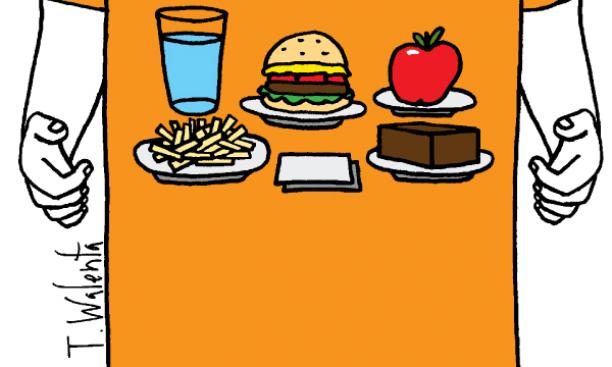

“They’re all trayless now? Oh no!” lamented Rafael Grinberg ’12. To the entering freshmen, the absence of trays in the Whitman College dining hall may not be unusual, but for those like Grinberg, who was among a vocal few against trayless dining, it means that the battle has been lost.
Greening Princeton, a student group that promotes environmentally friendly programs on campus, proposed trayless dining to Dining Services in 2009. Trayless not only would decrease water usage, the group said, but also would reduce food waste, since students would be more mindful of how many plates they could carry.
As trayless dining spread across campus dining halls — from Forbes to Butler/Wilson, then to Rocky/Mathey, and finally to Whitman — student support grew. For Elizabeth Cook ’13, trays are awkwardly large: “They’re an encumbrance both in trying to balance and in sitting at a table with others.” Student workers in the dining halls say trayless dining makes for an easier job. “There’s less to clean and refill,” said Marcos Lanio ’13, a student captain in the Rocky/ Mathey dining hall.
The 2010 report by the Office of Sustainability predicted that trayless dining could decrease energy costs by $4,000 in each dining hall, and there were predictions that food waste could be reduced up to 30 percent as students cut back on taking excess food.
But for Grinberg (who was denied permission to bring his own tray into the dining halls), trayless dining seemed to create as many problems as it solved. “The tables are dirtier because of food spills, and it takes much more water to keep them clean,” he said. “New conveyor belts had to be built in some dining halls to accommodate trayless, and that cost a lot of money.”
The real issue, he said, is the extent to which environmentally friendly trends will limit convenience. “Let’s limit shower time — that would save even more water,” he said wryly.
But now that trayless dining has been served up, only one question remains: What will students sled on in the winter?
